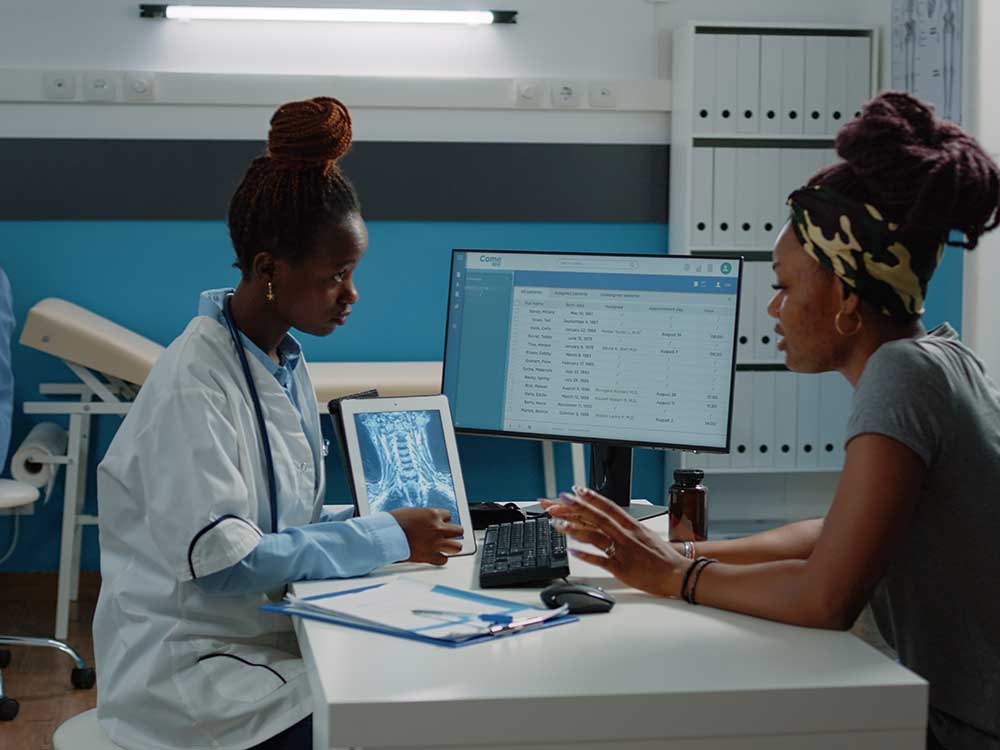Ideal Practices in Medical Administration for Improving Effectiveness and Decreasing Costs
In the ever-evolving landscape of health care, the quest of best practices in clinical management is vital for boosting effectiveness and suppressing costs. By incorporating innovative technologies such as digital health and wellness records and telemedicine, medical care carriers can streamline operations and improve patient treatment.
Leveraging Advanced Technology
In today's quickly advancing medical care landscape, leveraging innovative modern technology is no longer optional but necessary for effective clinical management. The integration of electronic solutions into healthcare systems has actually changed the means centers operate, enhancing procedures and enhancing patient treatment. Electronic Health And Wellness Records (EHRs) are essential, offering extensive person data that can be accessed instantly by authorized employees, thus reducing redundancy and minimizing mistakes. By streamlining person information, EHRs remove the demand for difficult documentation and facilitate seamless interaction among doctor.
Telemedicine is one more technical innovation that has transformed person interaction. It provides benefit for both people and medical care experts by making it possible for remote consultations, which can reduce the demand for in-person visits and optimize consultation scheduling. Additionally, telehealth systems can extend healthcare access to rural or underserved locations, connecting gaps in care delivery.
Additionally, making use of Expert system (AI) and artificial intelligence is ending up being significantly common in anticipating analytics, enabling for early detection of possible health and wellness problems and more informed decision-making. These modern technologies, when incorporated properly, can improve analysis accuracy and personalize individual treatment strategies, inevitably bring about boosted health care outcomes and operational performance.
Optimizing Resource Allotment
Effective resource appropriation is critical for optimizing the performance of medical administration. By tactically handling sources such as workers, tools, and finances, health care centers can dramatically enhance their operational performance, boost individual end results, and decrease unnecessary expenditures. The initial step in optimizing source appropriation includes conducting a comprehensive analysis of existing assets and identifying locations where resources might be underutilized or exhausted. This assessment ought to be data-driven, using metrics and analytics to inform decision-making processes.
Focusing on source allotment based on individual needs and service demands is crucial. This involves lining up sources with high-demand locations, such as emergency situation care or specialized treatments, to make sure prompt and effective client treatment. Executing flexible staffing designs can also optimize labor sources by adjusting personnel allotment in feedback to rising and fall client quantities. Furthermore, accepting telemedicine and various other technical remedies can relieve physical resource restrictions by offering alternative methods for patient-provider interactions.
Economic resources ought to be meticulously kept track of and alloted with calculated insight to support both temporary functional needs and long-term institutional objectives. This consists of investing in training programs that enhance personnel competencies and adopting energy-efficient practices that decrease operational expenses (medical administration). Inevitably, an enhanced source appropriation strategy fosters a lasting healthcare setting that is receptive, effective, and economically prudent
Streamlining Workflow Processes
When medical care facilities aim to improve operational performance, improving operations processes becomes a pivotal focus. Reliable process lessen redundancy, eliminate unneeded steps, and enhance coordination among medical care experts. This method not only accelerates solution delivery yet additionally boosts the quality of person care.

Next, modern technology assimilation plays a significant role in simplifying workflows. Implementing electronic wellness documents (EHRs) and computerized doctor order access (CPOE) systems decreases documents, reduces human error, and guarantees details is obtainable to all relevant personnel. In addition, leveraging telemedicine platforms can improve client examinations and follow-ups, minimizing internet the pressure on physical framework.

Eventually, structured process lead to cost decreases and improved client fulfillment, cultivating an extra lasting healthcare environment.
Enhancing Information Administration
Structure upon structured workflows, maximizing data administration ends up being an essential component beforehand health care administration. Effective data administration systems are important for preserving exact client records, enhancing decision-making, and making sure conformity with regulative criteria. By implementing durable information management solutions, healthcare facilities can boost the high quality of client care while all at once decreasing operational expenses.
One secret aspect of enhancing data management is the integration of sophisticated electronic health and wellness document (EHR) systems. These systems facilitate the seamless exchange of person details throughout various departments, minimizing duplication of examinations and minimizing mistakes. A well-designed EHR system sustains information analytics, enabling healthcare companies to recognize fads and make educated choices pertaining to person care.
Moreover, guarding individual data is extremely important. Adopting comprehensive cybersecurity actions, consisting of encryption and routine audits, makes certain the stability and discretion of delicate details. This not only safeguards patients yet additionally preserves the organization's track record.
Purchasing personnel training is another crucial aspect. Informing healthcare specialists on page data monitoring techniques enhances their ability to successfully utilize technology, resulting in improved patient outcomes. To conclude, improving information management via sophisticated modern technology and detailed training is necessary for accomplishing performance and cost reduction in clinical administration.
Fostering Collaborative Communication
A crucial component beforehand clinical management is fostering collective interaction among medical care professionals. Effective interaction is extremely important for guaranteeing seamless individual care, optimizing therapy results, and lessening mistakes. By urging open dialogue and sychronisation across multidisciplinary groups, medical care organizations can enhance their operational efficiency and decrease unnecessary expenses.
Central to this approach is the combination of interaction modern technologies such as digital wellness documents (EHRs) and safe and secure messaging platforms, which help with the fast exchange of important client details. These tools allow doctor to accessibility and share data in real time, making certain that all employee are educated and straightened in their decision-making Clicking Here procedures. Routine team meetings and interdisciplinary rounds can additionally advertise a society of collaboration and responsibility.
Training programs concentrated on boosting communication abilities are likewise essential. Inevitably, cultivating collective interaction leads to boosted medical care shipment and price financial savings.

Conclusion
Integrating sophisticated modern technology, such as digital health records and telemedicine, along with maximized source allotment and structured workflow procedures, is crucial for improving efficiency in medical administration. Effective information management and promoting joint communication among health care groups are important for decreasing redundancies and boosting care top quality. By prioritizing precautionary care and participating in high quality improvement efforts, medical care organizations can accomplish significant cost savings and enhanced person end results, therefore guaranteeing lasting health care shipment in an increasingly complex environment.
Comments on “Top Abilities Required to Excel in Medical Administration Roles Today”